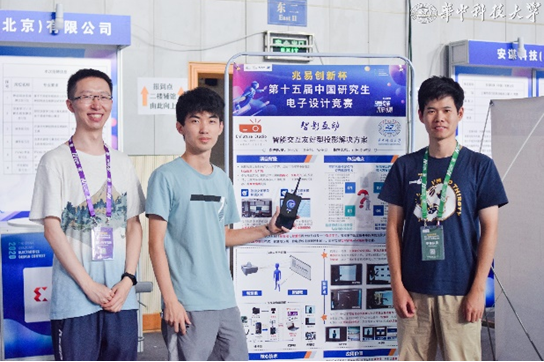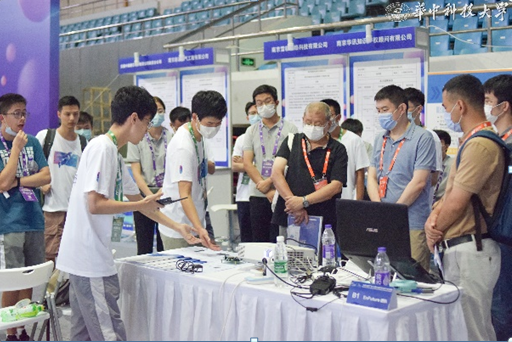
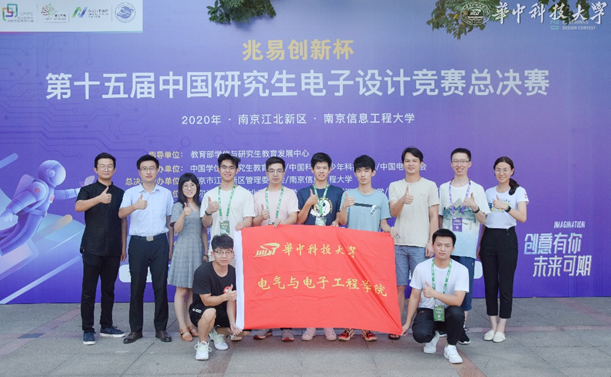
From August 18th to 21st, 2020, the finals of the “GigaDevice Cup” 15th China Graduate Electronics Design Contest were successfully held at Nanjing University of Information Science & Technology. 4 SEEE teams entered the national finals and won awards, which include the championship of the Contest.
The China Graduate Electronics Design Contest is the highest-level and broadest-ranged of the symbolic competitions in the China Graduate Innovation Practice Series Competition. A total of 3,818 teams with more than 15,000 graduate students from 262 universities and research institutes participated in the contest, out of which 402 teams from 109 universities advanced to the national finals after the preliminary rounds of 8 major divisions across China. 5 HUST teams moved on to the finals and won prizes. HUST also won the Huawei Special Competition Excellent Organization Award.
Tandem Science and Technology Team from SEEE won the championship - " Graduate Electronics Star" (the highest prize) in the competition (there are only three teams all over China). CAEMD Magnetic Field Modulation Team from SEEE won the National First Prize (TOP10) and First Prize of Mathworks Special Award of the Enterprise, meanwhile, and its instructor Qu Ronghai was honored the National Award of Excellent Instructor. Tuole Robot Team from SEEE won the National Second Prize. Enfuture Team won the Second Prize of the Huawei Special Competition.
Introduction of award-winning teams
Tandem Science and Technology
Championship in Huawei Special Competition (embedded system)
The team’s winning work is "efficient, reliable and powerful - power system subverter of high-power UAV". This project puts forward a high-voltage power system scheme with a tenfold increase in voltage level. On the basis of 400V voltage level, a comprehensive system-level power system solution including modular battery pack, high-performance electric control based on series winding topology, and five-phase motor with new magnetic steel structure is proposed, and the new high-voltage high-power UAV power system is finally realized.
Under the guidance of SEEE instructors Jiang Dong and Liu Zicheng and with outstanding performance in the national competition, the team won the championship of Huawei’s embedded system special competition. Among the 12 competition teams composed of top 10 national competition teams and 2 channel champions of the Huawei special competition, the team led by student Ang Lee won "Graduate Electronics Star" in the competition, becoming the first " Graduate Electronics Star" in our university in more than ten years.



CAEMD Magnetic Field Modulation Group
National First Prize
The instructor of the team is Qu Ronghai from SEEE. The team's entry is "Development of a high-performance dual electromechanical port motor system for hybrid systems". In order to break the foreign monopoly on the core technology of the hybrid system, this work proposes a non-contact hybrid power system based on dual mechanical dual electric port motors. The system enables the efficient operation of the engine and controllable torque and speed of output port (such as wheel), and has the advantages of high integration, high reliability and low vibration and noise. With a new rotor structure, integrated winding scheme and advanced control algorithm, the torque adjustment ability of the system is increased by 5 times, the flow capacity is improved by 41.4%, and the impact fluctuation is reduced by 95.2%. This high-performance dual electromechanical port system has broad application prospects.

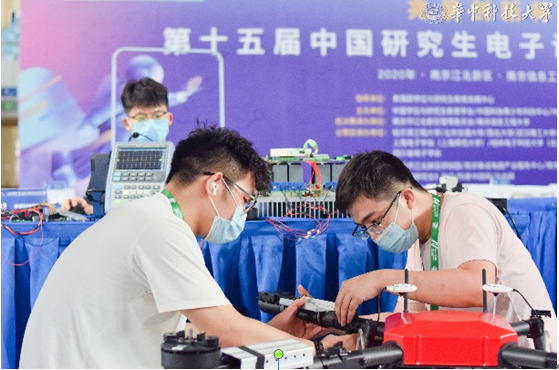
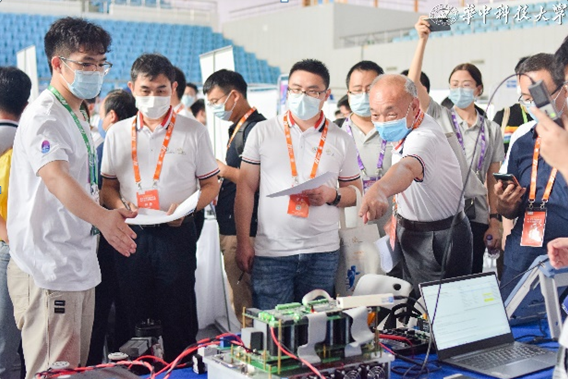
Tuole Robot
National Second Prize and Second Prize in Huawei Special Competition
The instructor of the team is Chen Yu from SEEE. The team’s entry is “Fully automatic elevator taking robot based on indoor navigation and machine vision”. The work proposed a fully automatic elevator taking robot based on indoor navigation and machine vision, which can carry out material distribution, building cleaning, security inspection, disinfection and epidemic prevention in modern buildings. It is a robot with cross era significance in the field of service robots. It evolves the traditional elevator taking mode into a fully automatic elevator taking mode with human-like logic, which greatly expands the use scenarios and application industries of elevator robots, reduces the cost of service robots taking elevators, and improves the degree of intelligence. With rich expansion capabilities, it will become a common infrastructure technology for service robots to go to all walks of life.

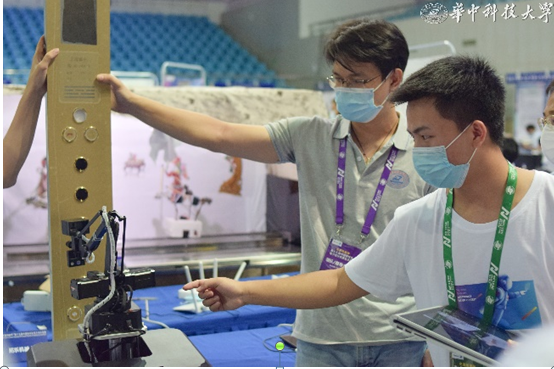

Enfuture
Second Prize in Huawei Special Competition
The instructor of the team is Prof. Shi Dongyuan from SEEE. The team’s work mainly focused on the two major weak points of the widely used laser projection, namely, the lack of intelligent interaction mode and the damage of projection laser to the eye health. The team innovatively proposed intelligent interactive friendly projection solutions.
